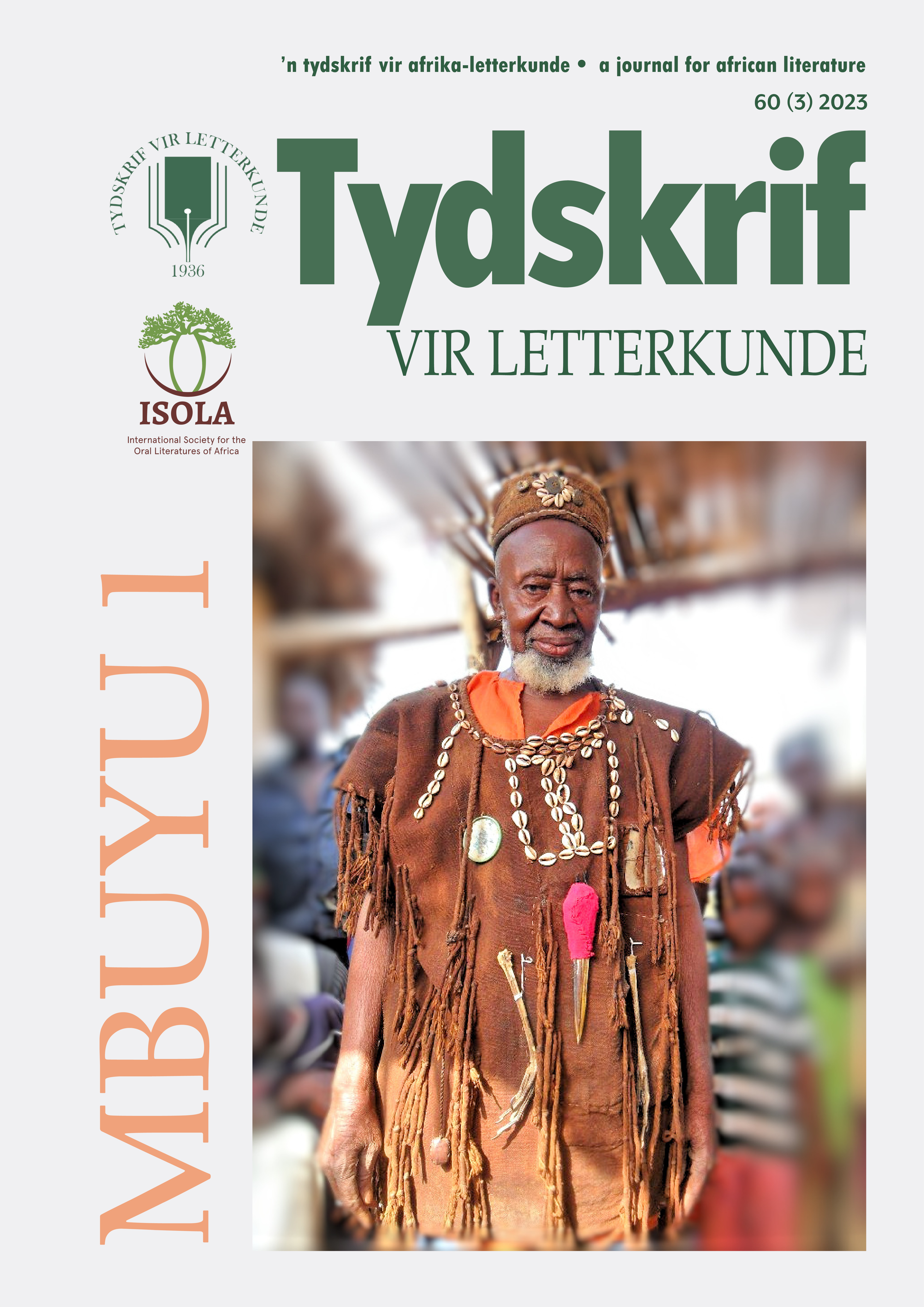Folklore genre designation among the Manden peoples
DOI:
https://doi.org/10.17159/tl.v60i3.14401Keywords:
oral tradition, Manden, genres, folkloreAbstract
In this article I deal with the problem of division into genres and genre designation in the oral tradition of the Bamana, Maninka, and Dyula. These people belong to the Manden or Mandinka, Mandingo peoples (Mali, Guinea, and Burkina Faso). For comparison, the names of similar genres among the Dogon are also given, as the Dogon consider themselves a Manden people, even though their languages do not belong to the Mandé language family. Both expeditionary materials and written sources were used. Almost all the words related to genre formation were recorded, and a description of the genres themselves was given. It was interesting to understand what features are important for choosing genres for Manden peoples. Due to cultural characteristics and historical development, the generally accepted division into genres is not entirely suitable for the Manden peoples and forms a “Procrustean bed” for their subdivision. First of all, the degree of ‘seriousness’ of the genre is important, that is, its significance for tradition: ‘true’ texts are opposed to fictional ones. The degree of rituality of the folklore text is also significant. Restrictions on the performance of texts are associated with the ability to control the occult power of nyama energy. An important role in this is played by the presence of the griot tradition. Also, a formal feature plays a role in defining various folklore genres.
Downloads
References
Bagayoko, Adama. Kolokèlen: théâtre et folie. Z’éditions, 1996.
Bailleu, Ch. Dictionnaire français–bambara. Editions Donniya à Bamako, 1998.
Bamadaba. Dictionnaire Bambara–Français. http://cormand.huma-num.fr/Bamadaba/lexicon/a.htm#a.
Derive, Jean. “Le fonctionnement sociologique de la litterature orale. L’example des dioula de Congo (Cote d’Ivoire).” Diss. Paris Institut d’Ethnologie, 1987.
Durán, Lucy. “Ngaraya: Women and musical mastery in Mali.” Bulletin of the School of Oriental and African Studies vol. 70, no. 3, 2007, pp. 569–602. DOI: http://dx.doi.org/10.1017/S0041977X07000845. DOI: https://doi.org/10.1017/S0041977X07000845
Dumestre, Gérard. Dictionnaire bambara–français suivi d’un index abrégé français-bambara. Karthala, 2011.
La bibliothèque numérique des littératures en langues africaines (ELLAF). “Litterature-en-mandingue.” n. d. http://ellaf.huma-num.fr/litteratures/litterature-en-mandingue/.
Lotman, Yuri. Статьи по типологии культуры // Лотман Ю. М. Семиосфера. Культура и взрыв. Внутри мыслящих миров. Статьи. Исследования. Заметки. (Articles on the typology of culture // Lotman Yu. M. Semiosphere. Culture and Explosion. Inside the thinking worlds. Articles. Research. Notes). St. Petersburg, 2010. Art-SPb. (392–459).
Meillassoux, Claude. “La Farce Villageoise à La Ville: Le Kɔtɛba De Bamako.” Présence Africaine no. 52, 1964, pp. 27–59. DOI: https://doi.org/10.3917/presa.052.0027
Puren, Odile. “Le kotéba: théâtre traditionnel malien.” La revue de Theran no. 40, 2009. http://www.teheran.ir/spip.php?article910#gsc.tab=0.
Vydrin, Valentin. Manding–English Dictionary (Maninka, Bamana). Vol. 1. Dmitry Bulanin, 1999.
Downloads
Published
Issue
Section
License
Copyright (c) 2023 Tydskrif vir Letterkunde

This work is licensed under a Creative Commons Attribution-ShareAlike 4.0 International License.


 https://orcid.org/0000-0001-6465-6584
https://orcid.org/0000-0001-6465-6584


.png)